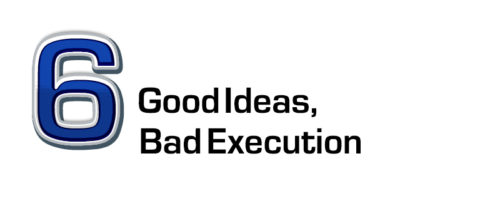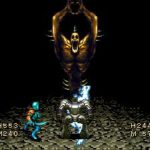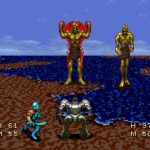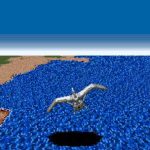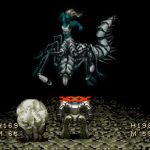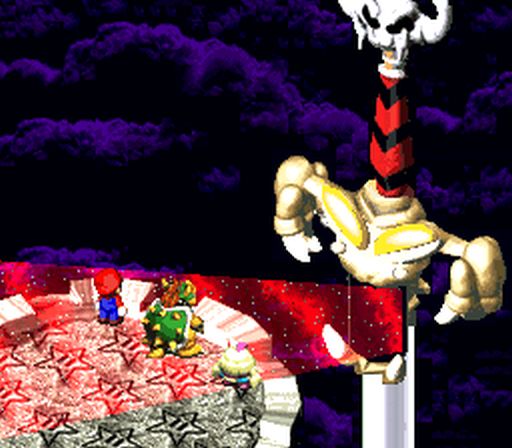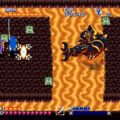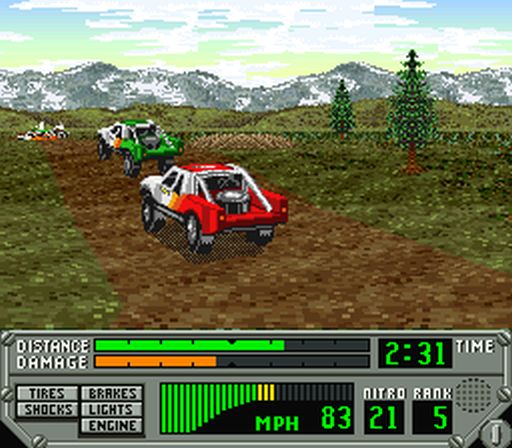Developer: Produce Co. Publisher: Enix Released: August 3, 1993 Genre: RPG Platform: SNES
It was common practice back in the day to make difficulty adjustments when localizing games for western markets. Games were made a bit more challenging for the US and bumped up even further for Europe. When done right it can make a game even better. Mechanics that could be flat out ignored get a chance to shine as the challenge necessitates their use. On the other hand it can also ruin a game by throwing off its balance and it is on this side of the coin that 7th Saga falls. It was already a tough game but due to the unnecessary adjustments it is now one the most difficult RPGs you’ll ever come across.
King Lemele has gathered his seven apprentices and proposed a challenge. Whoever gathers the seven runes of power used to defeat the evil Gorsia in times past will become his successor and rule the world. Each hero has their own reasons for seeking out the runes and not all of them are for altruistic reasons. But the race is on to see who will succeed Lemele.
Your choice of hero has a significant impact on your experience with 7th Saga and is possibly the game’s greatest strength. Each character differs wildly from the next in terms of stat growth, abilities and their weaknesses. Esuna strikes a nice balance between healing and attack magic plus has a nice selection of equipment to shore up her weak defense. Lux the Tetujin gains no weapons and armor until late in the game but his robotic body makes up for it. This frees up money to buy equipment for whoever you partner with. Lejes focuses on black magic but is physically weak. For those who can’t decide Kamil is a nice well rounder.
Learning each characters strengths and weaknesses is crucial since you’ll eventually have to partner up with someone to survive. In these instances its best to find someone who will shore up your weaknesses rather become an additional hassle. Wilme and Lux don’t work well together since neither has any healing magic, forcing you to spend cash on potions. Pairing up Olvan and Kamil is a bad idea since they both use similar spells and are gear dependent; it’s hard enough grinding out money for one character but two? Ridiculous. Pairing up almost anyone with Valsu is smart as his healing spells (especially Elixir) will make your team virtually invincible. Of course just because you’ve decided on a partner doesn’t mean they’ll join you. If their principles clash chances are they’ll refuse although there is still a slight chance of recruitment.
You have a crystal ball that helps locate important items like the seven runes but its main function is a monster radar. All random enemies are represented as dots on the map. Supposedly you can avoid them but I won’t bullshit you, that’s not happening. Not only do they move significantly faster walls they can also walk through walls! Bottom line, prepare to enter combat every five or six steps. It is just as annoying as it sounds too.
Battles are turn based and work on a weird system wherein defending will build up power and increase the strength of your next attack. In the early going you’ll rarely encounter more than one enemy at a time but soon enough groups of two or three aren’t uncommon. With the frequency of encounters most dungeons become nightmarish one or two hour excursions. No because they are long but you will need to leave in order to resupply. It’s very rare that you’ll ever leave any random battle without taking some damage. Excessive grinding is necessary to shorten the length of time you’ll spend in each cave/castle which sucks. It is here where Enix screwed up the game’s balancing.
For 7th Saga’s US debut the stat boosts received from leveling up were reduced. However the enemies were not adjusted to compensate. With that small change the entire balance of the game is thrown off and has a ripple effect. After about an hour or so of progress just about any random encounter is potentially deadly. Instant death spells and hard hitting magic are frequent before your turn starts. This is one of the few games where the random encounters are more dangerous than the bosses. Once you partner up experience is split making leveling up even more of a grind.
Where it really hits home is the game’s midpoint. Here you’ll face one of the other apprentices. This is a solo encounter and their level is based on your own, meaning you can’t brute force it. Their stats are still based on the Japanese version of the game pre-balancing; basically they outclass you completely. My first time using Kamil every hit took half of my life even when defending and fully buffed. I actually started over and used Lux and still barely squeaked by through sheer luck. I’ve never shied away from a challenge but the changes made to 7th Saga are excessive and game breaking.
It’s a god damn shame that the difficulty hampers 7th Saga so badly as the production values are pretty stellar. The mode 7 battlegrounds still look pretty cool and the art and spell effects are pretty ace. The creature design is fairly original and all enemies possess fully animated attacks. The soundtrack is also a cut above, evoking a middle-eastern feel not common to video games.
In Closing
7th Saga is one of the hardest RPGs ever, harder than Phantasy Star 1-2 even. It might even be tougher than junk like Deadly Towers and Hydlide. Unfortunately I can’t recommend it unless you cheat your way past the game’s obscene difficulty but you shouldn’t have to resort to those means to enjoy a game.
